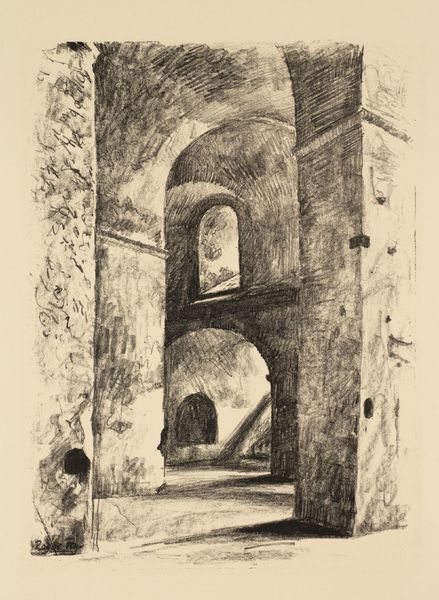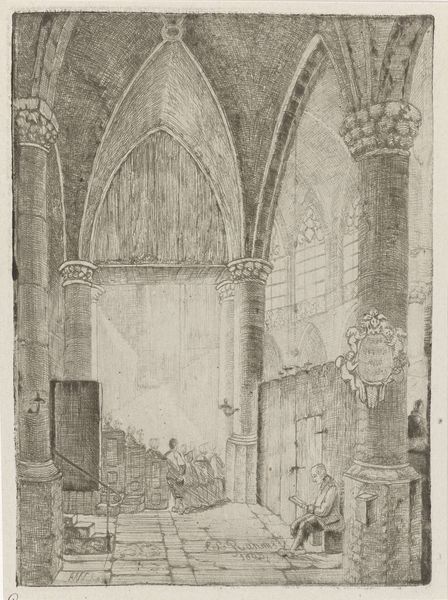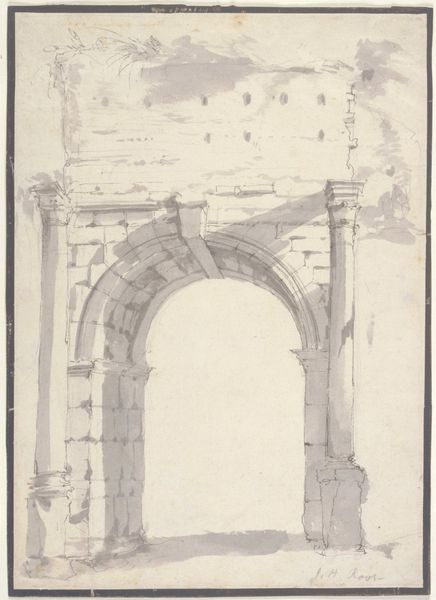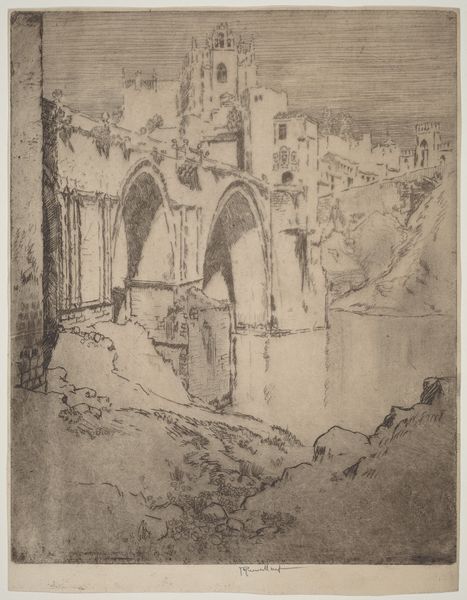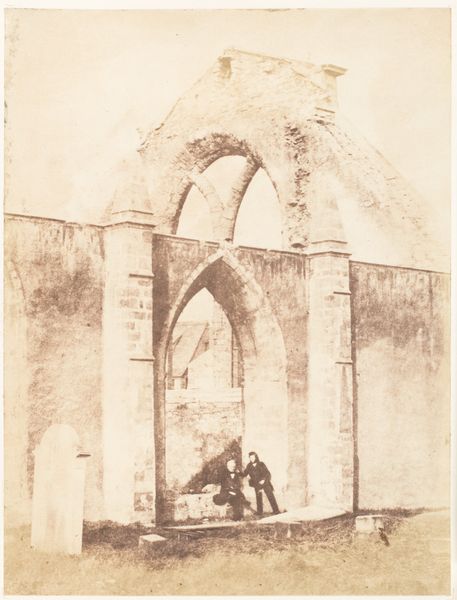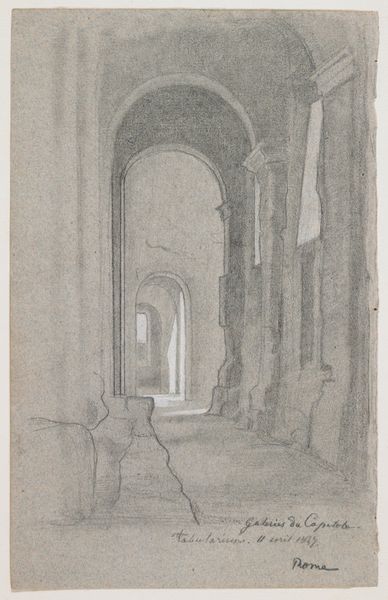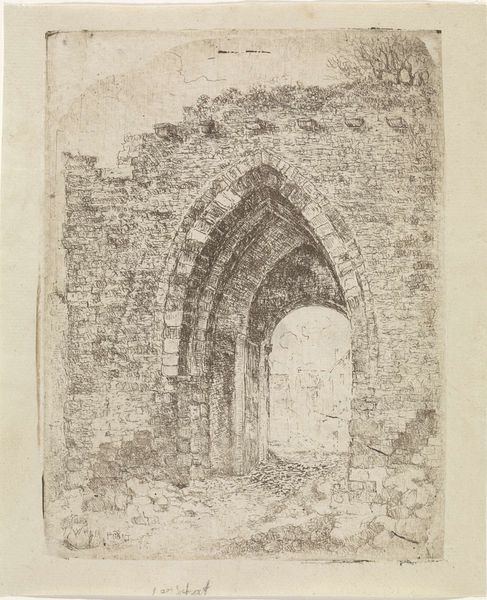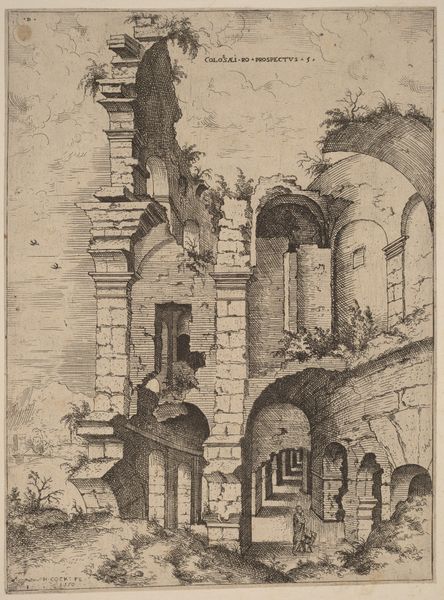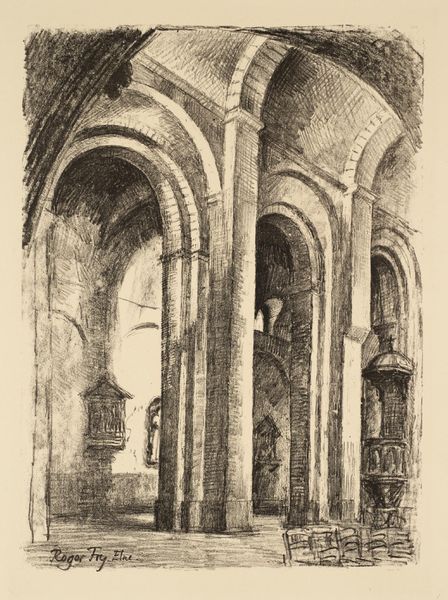
drawing, paper, pencil, architecture
#
drawing
#
baroque
#
landscape
#
classical-realism
#
perspective
#
paper
#
pencil
#
architecture
Dimensions: height 310 mm, width 218 mm
Copyright: Rijks Museum: Open Domain
Curator: This delicate drawing is "Gezicht in antieke ruïnes," or "View of Antique Ruins," created between 1610 and 1657 by Bartholomeus Breenbergh, rendered in pencil on paper. Editor: Immediately, the sheer scale impresses me—but not in a triumphal way. It’s a monumental emptiness. The repeated arches create this sense of echoing chambers, vast but devoid of life. Curator: Absolutely. Breenbergh uses the classical ruins to evoke a powerful sense of the past, of vanished glory. The architectural details carry potent cultural weight; these broken arches whisper stories of the Roman Empire, of a civilization that once was. Editor: What I find striking is the artist's technique. Look at the lines—they are almost hesitant, creating texture and volume through layering. It’s the opposite of bombastic; it emphasizes the gradual decay, the crumbling materiality of the architecture. We see the physical process of decline made manifest. Curator: The subtle rendering also pulls us in. There is something quite intimate, despite the grand scale, almost contemplative. This is the human spirit meditating on mortality, seeing itself in relation to the cycles of civilizations, their rise and fall. The architectural space becomes a metaphor for time itself. Editor: And who built it? Using what? Hauling those stones with their own hands and primitive technologies? And how many anonymous people saw this structure completed and perfect before it started to fall? I want to know the stories of the masons who shaped these stones! Curator: I appreciate you calling attention to the anonymous, unnamed contributions. What we remember often occludes the complex production chains. It invites us to reconsider history. Editor: Looking at it with the eyes of a stone worker or the labourers might change your feeling, too. The drawing gives a glimpse to its monumentality, though the work behind is often not recognised. Well, at least by looking at the way that time works, even monuments made from stone will break down one day... Curator: It truly embodies how visual art memorializes events, lives, values, inviting viewers to grapple with collective memory. Editor: I'll think twice next time I enter a historical landmark.
Comments
No comments
Be the first to comment and join the conversation on the ultimate creative platform.

